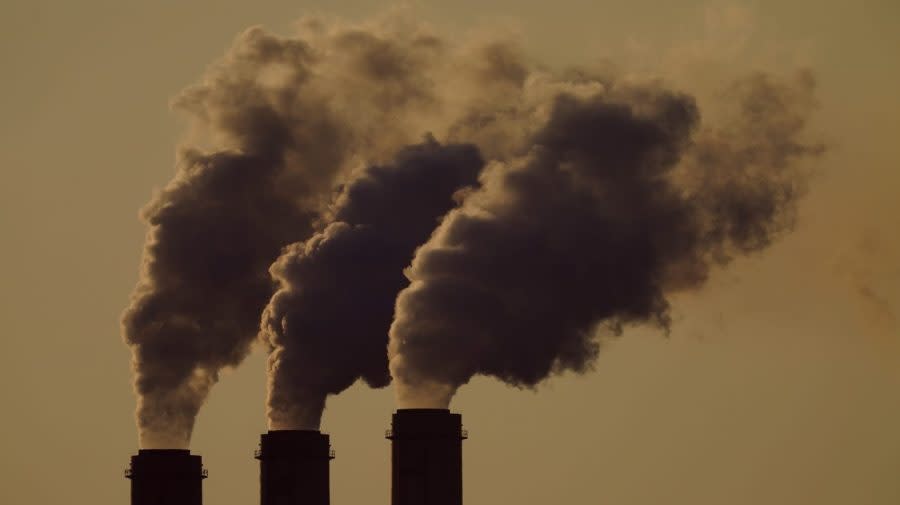Biden crackdown on power plants expected to speed shift away from coal

The Biden administration’s crackdown on power plants’ planet-warming emissions will accelerate a shift away from coal, and potentially speed the U.S.’s adoption of renewable energy sources.
The administration this past week announced a new rule that will require coal plants and new gas plants to install carbon-capture technology to mitigate 90 percent of their emissions — or find another way to achieve the equivalent climate protections.
But experts say that instead of trying to meet these requirements, more coal plants may just retire — and some power companies may opt to invest in renewables over keeping existing coal plants or putting costly carbon capture on new gas ones.
“What we’ve seen, even without these rules, is that coal generation is falling,” said Christopher Knittel, a professor of applied economics at the Massachusetts Institute of Technology (MIT), noting that “the writing’s kind of on the wall” because of fracking driving down natural gas prices.
“But,” Knittel added, “these new rules will certainly push to speed that transition up.”
The Environmental Protection Agency’s (EPA) analysis shows that the rule could increase the amount of coal power that comes offline between 2028 and 2035 by nearly 25 percent.
The agency projects that without the rule, 84 gigawatts of coal power would have retired during that period. But under the rule, that number is expected to jump to 104 gigawatts of power.
Research firm BloombergNEF reached similar findings for this decade.
Julia Attwood, an industrial decarbonization specialist with the firm, estimated that around 44 gigawatts of coal power were due to retire by the end of 2030 anyway, but the rule will cause an additional 30 to 40 gigawatts to go offline during that period.
Attwood said BloombergNEF models an average coal plant as being equivalent to about 0.65 gigawatts, so this would amount to around 46 to 62 additional plant closures during that period.
“A lot of coal plants are just going to be pushed to retirement because of the expense of using [carbon capture and storage],” she said.
The new rule received significant pushback from coal advocates, including workers, industry members and Republicans.
Cecil Roberts, president of the United Mine Workers of America union, said in a written statement that it “looks to set the funeral date for thermal coal mining in America for 2032” — the date by which coal plants will now be required to cut their emissions.
Roberts added that the rule will “threaten the livelihoods of our members” and said the administration has been unsuccessful at replacing the jobs lost by miners in the energy transition thus far.
“I am not aware of a single dislocated coal miner who has been hired as a result of legislation or other initiatives put in place over the last several years,” he said.
Sen. Shelley Moore Capito (R-W.Va.), meanwhile, said she would introduce legislation to challenge the rule.
“The administration has chosen to press ahead with its unrealistic climate agenda that threatens access to affordable, reliable energy for households and employers across the country,” Capito, the top Republican on the Senate Environment and Public Works Committee, said in a written statement.
“I will be introducing a Congressional Review Act resolution of disapproval to overturn the EPA’s job-killing regulations announced today,” she added.
In addition to driving the country further away from coal, the rule may also speed up an ongoing shift toward renewable energy.
The EPA projects the rule will boost the amount of the country’s power that is supplied by renewable energy by an additional 4 percent in 2030. Its impact will taper off over the years, however, as renewables would also be expected to grow under previous policies: In 2040, it is expected to result in just 1 percent more renewable energy.
Attwood of BloombergNEF said she believes the rule is good for renewables because it will “free up some needed capacity on the grid that renewables can fill.”
Mark Thurber, associate director at Stanford University’s Program on Energy and Sustainable Development, said that renewables’ reliance on weather conditions means they may not be able to sub in for coal in many cases.
“It’s kind of an apples and oranges comparison between renewables and then on the other side, gas and coal, because of the intermittency of those renewables,” Thurber said.
But Attwood noted that the rule’s exclusion of existing gas plants from the new requirements could keep some such plants online — mitigating concerns about renewables not working when there’s no sun or wind.
Knittel from MIT also believes the rule will “delay the closure of existing gas plants” because maintaining such plants will be cheaper than building new gas ones with carbon capture.
The Biden administration initially proposed restricting emissions from some existing gas plants under the rule but ultimately dropped those provisions, saying it would pursue a separate rule for existing gas.
It may not have time to do so if Biden isn’t reelected in November, however — and if former President Trump returns to the White House, he is not expected to increase climate regulations on power plants.
“The big uncertainty that really remains here is what happens with existing gas plants,” Attwood said.
“If it’s the same administration, then the EPA will probably go back to those gas plants and try to figure out a way to put emissions restraints on them as well,” she added.
For the latest news, weather, sports, and streaming video, head to The Hill.


